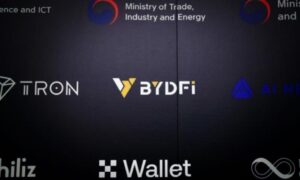Things are pretty different with open-source cryptocurrency. You don’t have to understand every line of code that Bitcoin supports to utilize, but it is essential to have the choice. No hierarchy, you see, and no bank can release updates and alter things as it pleases. This may make it difficult to add new features to Blockchain networks.
Who Decides on a Blockchain Network?
To comprehend how forks operate, it is essential that the players participating in the network’s decision-making process first understand. In Bitcoin, one could generally distinguish between three groups of players — developers, miners, and node users in their whole. Light nodes are widely utilized, yet as far as the network is concerned, they are not indeed “participants.”
- Developers
- Miners
- Users of the entire node
Developers develop a code with no program to operate without them, and nobody patch problems or add new features. • Developers build the code. Miners protect the network — the chain may be hijacked or stopped without robust mining competition. However, if these two groups attempted to make the remainder of the network powerful, it wouldn’t end very well. The actual power is focused on incomplete nodes for many. This is mainly due to the opt-in network, which allows users to select whatever software they use.
These parties are not rulers all-powerful — they are service suppliers. If individuals opt not to utilize the network, the currency loses its value. The decrease in value affects miners directly. As for developers, consumers can ignore them. You see, it’s not like proprietary software. You can make whatever changes you desire, and you can all communicate if other people use your updated program. In this scenario, you bend the program and build a new network.
Types of Forks
Forks are of two kinds in Blockchain
Soft Fork
A soft fork is a retrofit-compatible software update with previous versions. Thus, users who haven’t upgraded to the new software may still participate in transactions validation and verification. Implementing a soft fork is considerably more straightforward since just a majority of participants must update the program. Either they have upgraded or not, all participants will continue to identify new blocks and ensure the network compatibility.
Non-upgraded participants will still perceive that new transactions are legitimate. The problem is that if non-upgraded miners attempt to mine new blocks, the network will reject their blocks. Soft forks, therefore, offer an advanced upgrading method because those who still have to update their software are encouraged or risk limited functionality.
Hard Fork
The term “hard fork” refers to a software update that is incompatible with older versions. To continue participating and verifying new transactions, all participants must update to new software. Those who did not update would be removed from the network and would not verify new transactions. This split causes the Blockchain to diverge permanently. As long as the minority chain – in the form of participants mining the chain – is supported, there will be two simultaneously.
Working of Forks
Any crypto-technology platform may have a fork in a blockchain – not only Bitcoin. The Crypto Trader is one of the trending apps for Bitcoin exchange. That’s because cryptocurrency blockchains function essentially the same way regardless of the crypto-platform on which they operate. The blocks in blockchains may be thought of as cryptographic keys which transfer memory. Because the miners establish the rules for moving the memory across the network in a blockchain, these miners comprehend the new regulations.
However, all the miners must agree on the new regulations and what constitutes a legitimate chain block. So if you wish to alter those rules, you need to “fork it” – like a fork on the road – to show that the Protocol has changed or changed. The developers may then reflect the new regulations by updating the program. For an incidental cryptocurrency trader, the distinction between these cryptocurrencies may be tough to determine and map the different splits on a timeline.
Conclusion
Hard forks and soft forks are the same in that an old version is kept on the network while creating a new version is when the current code of a cryptocurrency platform is updated. Only one Blockchain is legitimate with a soft fork when people take up the upgrade. Both forks produce a divide, but a hard fork generates two blockchains and one soft fork.
Given the security differences between hard and soft forks, virtually all users and developers are calling for a hard fork, even though it appears a soft fork might accomplish the job. To overhaul the blocks in a blockchain requires enormous processing power, but it takes more to ensure anonymity than utilizing a soft fork.


































